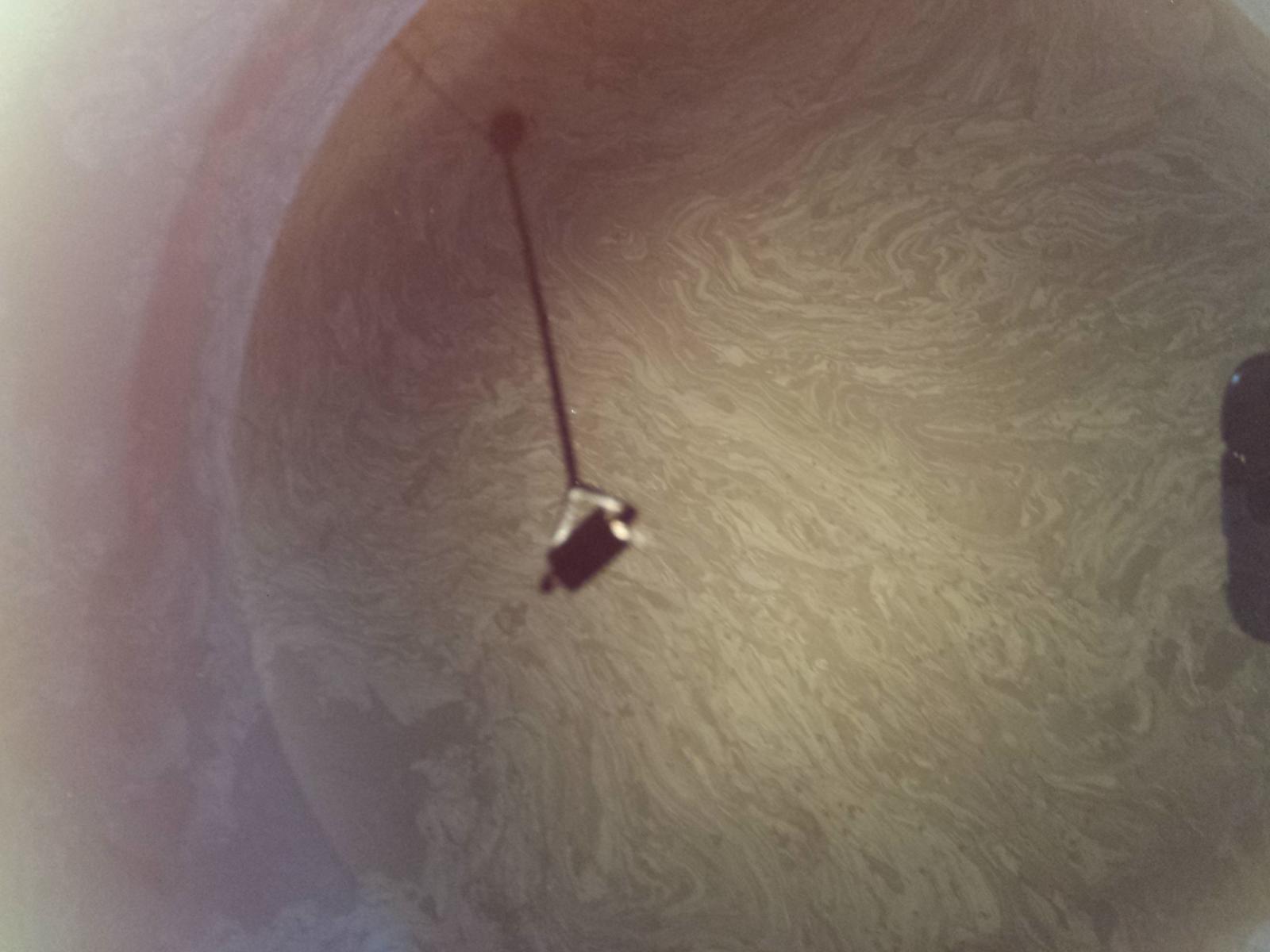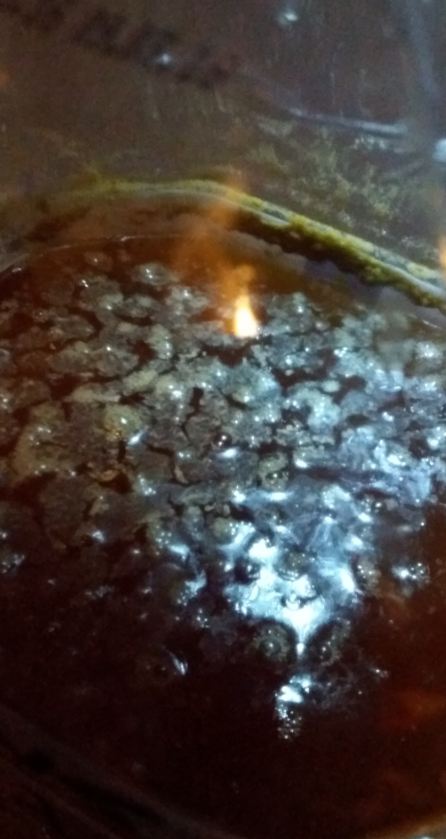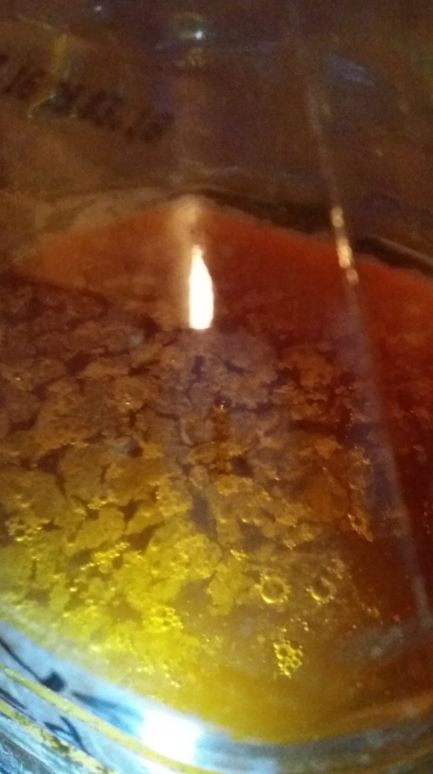That looks like the label adhesive didn't come off fully (no oxy-clean soak), to me.
I delable with an oxy clean soak. Then rinse.
The rinse with San-star prior to bottling .
That "adhesive" looking stuff is on the inside not outside!

That looks like the label adhesive didn't come off fully (no oxy-clean soak), to me.
I don't think this looks all that weird, what I'm not sure what to think of is the portion that looks like dried, fragmented mud. Anyone seen anything like this before? It's an ESB that came back to life after about 2.5 weeks and as of right now it tastes pretty dang good.
https://www.flickr.com/photos/30832809@N08/26160495742/in/album-72157666807479375/
https://www.flickr.com/photos/30832809@N08/25980091750/in/album-72157666807479375/
https://www.flickr.com/photos/30832809@N08/25980101290/in/album-72157666807479375/
Thoughts?
I delable with an oxy clean soak. Then rinse.
The rinse with San-star prior to bottling .
That "adhesive" looking stuff is on the inside not outside!
I am no expert but I have to ask. This is what was left after you packaged your beer right? That just looks like yeast/trub to me with some escaped CO2 as well. Basically you will get sludge on the bottom of your fermenter under the beer which consists of proteins, yeast (living and dead as it really reproduces during teh beginning stages of fermentation) hop debris, etc.
No worries. Homebrew is rather forgiving.
Quite the contrary, actually. This is the top of my 3 gallon batch of ESB with all 3 gallons still in there. Nothing has been bottled. This is what the beer looks like inside the fermenter as it stands right now. It looks like krausen but I just was not sure, hence my posting here. On monday I opened it up and it smelled/tasted good still. So I dunno what's going on with this one.
Pretty sure it's just normal krausen. I think I've tried to brew an ESB with 1968 two or three times before and it took me a while before I realized the yeast is so flocculent, it flocs out before it finishes. This has manifested for me with a weird (flavor), hazy (crystal clear at bottling), overcarb-ey bottle situation in at least two of these batches.
Dunno what yeast you used, but could possibly be what's happening here and some sort of environmental change (ambient temp rise?) is taking the place of a manual gentle rousing or two of the yeast.






![Craft A Brew - Safale S-04 Dry Yeast - Fermentis - English Ale Dry Yeast - For English and American Ales and Hard Apple Ciders - Ingredients for Home Brewing - Beer Making Supplies - [1 Pack]](https://m.media-amazon.com/images/I/41fVGNh6JfL._SL500_.jpg)











@Nico93 looks fine to me, some of my beers have that on top depending on the light and the recipe.



OMG, this thread makes a baby brewer like myself feel like you do when you have a sore throat and go on WebMD and walk away thinking your dying of some super long named disease!
Weird... that's exactly the opposite of what this thread is supposed to be about. This is supposed to help the new brewer have assurance that they don't have some super long named disease - by being able to compare their brew to the pictures of the infections versus the ones that are labeled completely normal, or by simply posting photos of their brew and being told whether or not it's infected.

I was going to post my infection, but it was difficult to even look at. Besides, the prescription cream I used cleared it up before I could get a picture of it.
I would like to have an experienced opinion about my brew. I have only 6 brews under my belt, so I have still quite much learning to do.
beergolf said:It does look good, doesn't it?
Almost as good as this one... Of course this one is intentional.
https://www.homebrewtalk.com/showpost.php?p=7211864&postcount=2896
I've got one in a carboy that looks very much like that. Bottle it anyway (in big bottles) and hope for the best?
Weird... that's exactly the opposite of what this thread is supposed to be about. This is supposed to help the new brewer have assurance that they don't have some super long named disease - by being able to compare their brew to the pictures of the infections versus the ones that are labeled completely normal, or by simply posting photos of their brew and being told whether or not it's infected.
Looks healthy to me. Did you taste/smell it?
After a recent infection scare and looking at literally every page on this thread, I can say that you should have nothing to worry about. It's when you get the fuzz growing in there or things that look like white icebergs that you have something to worry about.
Thanks for all of your input. My reasoning behind posting that is it looks like it's the start of an infection. 3 days before that when I took a sample, there were no bubbles.
Thanks for all of your input. My reasoning behind posting that is it looks like it's the start of an infection. 3 days before that when I took a sample, there were no bubbles.
How old is this beer and how does it taste/smell?